Sassanid Empire: Rise and Fall of the Sasanians
The Sassanid Empire, a formidable Persian dynasty established in the third century CE, represents a pivotal chapter in the annals of ancient history.
Thriving in the heart of the Middle East for over four centuries, the Sassanids have left an enduring imprint on the landscape of political, cultural, and military dynamics. This article delves into the multifaceted aspects of the ancient Sassanid Empire, from its expansive geography and political intricacies to its rich cultural heritage and military achievements.
Sassanid Empire Geography and Location
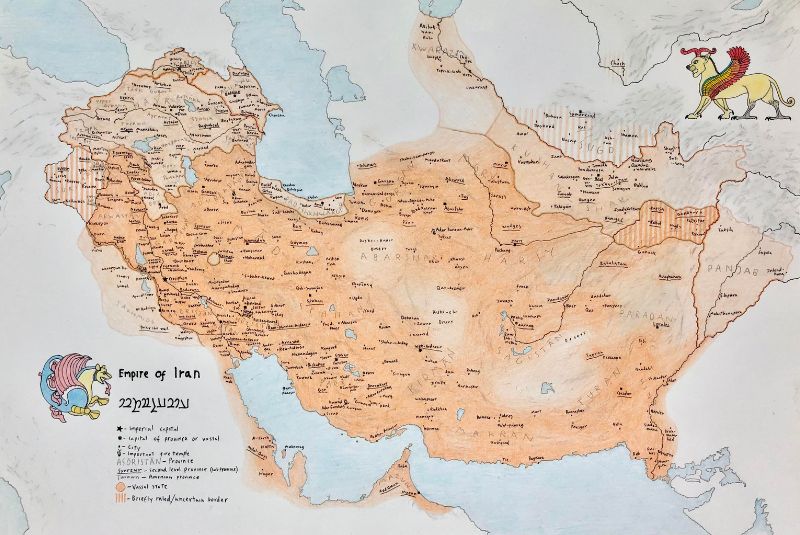
Map of the Sassanid Empire
The territorial expanse of the Persian Sassanid Empire is visually depicted in the maps of the era. Stretching from the eastern fringes of the Euphrates River to the western boundaries of the Indus River, the Sassanid Empire encompassed vast regions of the Middle East and Central Asia. These maps illustrate the strategic positioning of the Empire, highlighting key geographic features, trade routes, and neighboring civilizations.
| Related: Persian Empire | Facts & History of Achaemenids
The Empire's Geographical Extent
The Sassanian Empire, at its zenith, covered a sprawling territory that spanned across modern-day Iran, Iraq, parts of the Caucasus region, and portions of Central Asia. To the south, it extended into the Arabian Peninsula, reaching the Persian Gulf. The northern frontier stretched towards the Caspian Sea, while the eastern borders touched the vast expanse of the Indian subcontinent. This geographical diversity played a crucial role in shaping the Empire's economic activities, cultural exchanges, and strategic considerations.
Notable Cities and Regions within the Sassanid Empire
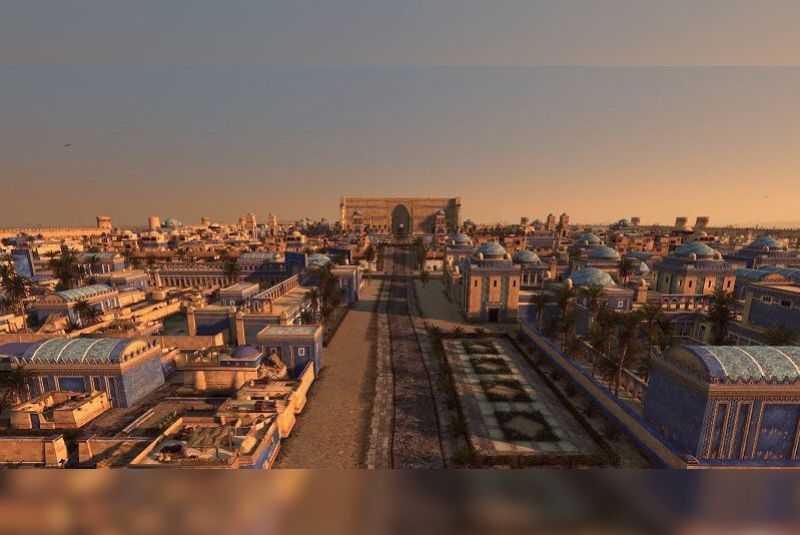
- Ctesiphon: The grand imperial capital, situated on the eastern bank of the Tigris River, served as the political and administrative heart of the Sassanid Empire.
- Persepolis: Although not the Sassanid Persian Empire capital, Persepolis retained historical and cultural significance, showcasing the Empire's connection to its Achaemenid predecessor.
- Spahan (Isfahan): A major city in central Iran, Spahan (Today known as Isfahan) played a pivotal role as a regional center for commerce, culture, and governance.
- Nishapur: Located in northeastern Iran, Nishapur was a thriving hub for trade and craftsmanship.
- Susa: A historic city along the lower Tigris, Susa continued to be an influential center for trade and administration within the Sassanid Empire. (Read the complete article: Susa Persia; One of the Oldest Cities in the World)
- Mesopotamia: The fertile lands between the Tigris and Euphrates rivers were integral to the Empire, serving as a vital agricultural region and a crossroads of cultures.
| Discover: Firuzabad; The Ancient Capital | The Rise and Fall of Gor City
History of the Sassanid Empire
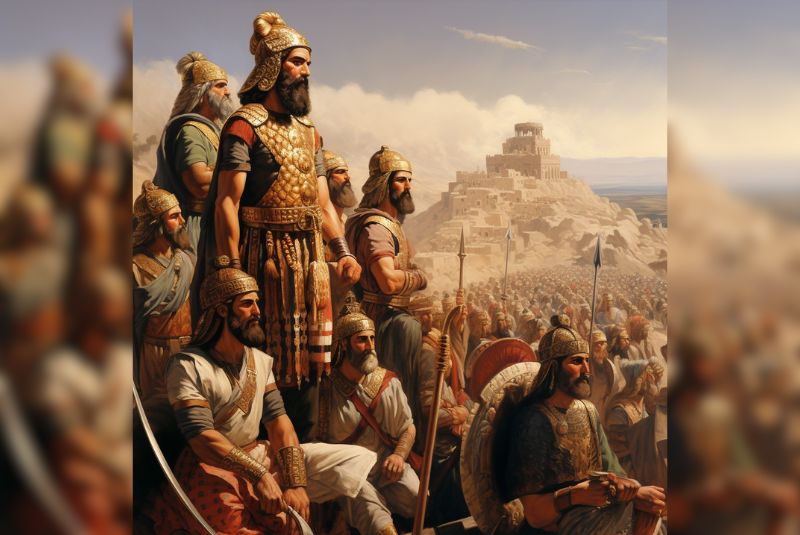
The roots of the Sassanian Empire trace back to the third century CE when Ardashir I, a local ruler, hailing from the House of Sasan, successfully overthrew the Parthian Empire in 224 CE, ruled by Artabanus IV. Ardashir I proclaimed himself as the Shahanshah (King of Kings), marking the establishment of the Sassanid dynasty. The early years of the Empire were characterized by territorial expansion and consolidation, with Ardashir I and his successors laying the foundation for a robust and centralized Persian state.
The new Empire centered around the fertile lands of Mesopotamia, and Ardashir set the capital at Ctesiphon, strategically positioned on the banks of the Tigris River near the ancient city of Seleucia.
| Suggestion: Frieze of Archers | The Ancient Persian Power
Key Events in Sassanid Empire Timeline
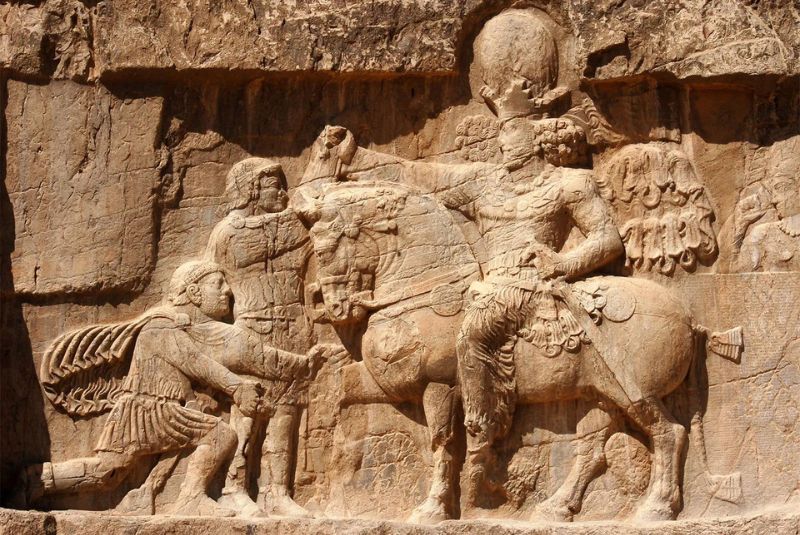
Wars of Ardashir I
Ardashir I sought to consolidate his power through military campaigns. His notable victories included the Battle of Hormozdgan in 224 CE, where he defeated Artabanus IV, and the annexation of the kingdom of Persis. Ardashir also clashed with the Roman Empire, capturing the cities of Carrhae and Nisibis.
Shapur I's Reign
Shapur I, the son of Ardashir, ascended to the throne in 240 CE. His reign is marked by military successes against Rome. In 260 CE, he defeated and captured the Roman Emperor Valerian at the Battle of Edessa, a significant humiliation for the Romans. Shapur I also undertook monumental construction projects, such as the city of Bishapur, and contributed to the flourishing of art and culture in the Empire.
Religious Policies
Zoroastrianism was promoted as the state religion, but the Sassanids practiced a relatively tolerant policy towards other religious communities. While Zoroastrianism held a privileged status, minorities were allowed to practice their faith, although there were occasional restrictions and persecutions.
| Read about: Faravahar | A Universal Symbol of Unity
Milestones and Turning Points
- The Treaty of Nisibis in 299 CE marked a diplomatic resolution between the Sassanids and the Roman Empire. It established the Tigris River as the boundary, bringing a temporary halt to hostilities.
- The reign of Khosrow I (531–579 CE) is considered a golden era. His administrative reforms improved governance, and the construction of the Taq Kasra, a grand arch in Ctesiphon, became a symbol of Sassanian architecture.
How Long Did the Sassanid Empire Last?

The Sassanid Empire endured for over four centuries, from 224 CE to 651 CE. Factors contributing to the decline of the Sassanid Empire are:
- Internal Strife: Succession disputes and power struggles weakened the central authority. Multiple claimants to the throne led to instability and weakened the Empire's ability to respond to external threats.
- Economic Challenges: Constant warfare, coupled with heavy taxation, strained the economy. The Empire struggled to maintain its vast territories, leading to financial difficulties.
- Military Pressure: Prolonged conflicts with the Byzantine Empire depleted the Sassanid military and resources. The Sassanids faced the formidable challenge of defending their extensive borders.
- Social Unrest: Discontent among various social classes, including the peasantry and nobility, contributed to internal strife.
Events Leading to the Fall of the Sassanid Empire
The decisive blow came in 651 CE when the Sassanids faced the Muslim forces of the Rashidun Caliphate at the Battle of Nahavand. The defeat was a culmination of earlier setbacks and internal weaknesses. The fall of Ctesiphon in 637 CE to the Arab forces and subsequent military defeats marked the end of the Sassanid Empire. The last Sassanid ruler, Yazdegerd III, fled to Central Asia, and the Islamic conquest reshaped the political and cultural landscape of the region.
Sassanid Empire Kings and Rulers
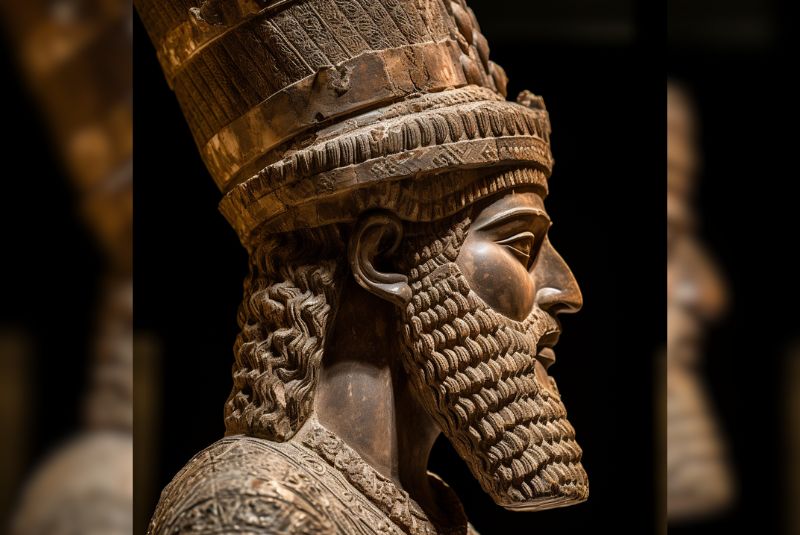
The Sassanid Empire was ruled by a series of kings and rulers from the House of Sasan. Here is an overview of some notable Sassanian monarchs:
Ardashir I (224–242 CE):
- Ardashir I was the founder of the Sassanian Empire. He successfully overthrew the Parthian ruler Artabanus IV in the Battle of Hormozdgan in 224 CE.
- Ardashir I proclaimed himself Shahanshah, establishing the Sassanian dynasty.
Shapur I (240–270 CE):
- Shapur I, the son of Ardashir I, continued his father's military campaigns and expanded the Sassanid Persian Empire.
- His reign is particularly notable for the capture of the Roman Emperor Valerian at the Battle of Edessa in 260 CE.
Hormizd I (270–271 CE):
- Hormizd I succeeded Shapur I but had a relatively short reign. His rule was marked by internal conflicts and succession struggles.
Bahram I (271–274 CE):
- Bahram I, the son of Shapur I, ascended to the throne after the death of Hormizd I.
- His reign faced challenges from internal dissent, and he was eventually overthrown.
Bahram II (274–293 CE):
- Bahram II faced external threats from the Roman Empire and internal challenges during his reign.
- His rule was marked by a balance between military campaigns and diplomatic efforts.
Bahram III (293 CE):
- Bahram III had a brief reign, and details about his rule are limited.
Narseh (293–302 CE):
- Narseh, the son of Shapur I, faced the Roman Empire in the Battle of Satala in 298 CE, resulting in the Treaty of Nisibis in 299 CE.
- His reign saw both military conflicts and diplomatic engagements.
Hormizd II (302–309 CE):
- Hormizd II's reign was marked by internal strife, including conflicts with the nobility and the Zoroastrian clergy.
Shapur II (309–379 CE):
- Shapur II, one of the longest-reigning Sassanian rulers, ascended to the throne at a young age.
- His reign witnessed conflicts with the Roman Empire, religious developments, and administrative reforms.
Khosrow I (531–579 CE):
- Khosrow I, also known as Anushiravan, is considered one of the greatest Sassanian kings.
- His reign is characterized by administrative reforms, economic prosperity, and cultural advancements.
Kavad I (488–531 CE and 531–579 CE):
- Kavad I ruled twice, facing periods of internal conflict, external threats, and political intrigue.
- His second reign, after returning from exile, saw efforts to stabilize the Empire.
Khosrow II (590–628 CE):
- Khosrow II, also known as Parviz, faced challenges from the Byzantine Empire and internal rebellions.
- His reign ended with the devastating Byzantine-Sassanid War, contributing to the Empire's decline.
Yazdegerd III (632–651 CE):
- Yazdegerd III was the last Sassanian ruler. His reign witnessed the Arab Islamic conquest.
- Following the Battle of Nahavand in 651 CE, Yazdegerd III fled, marking the end of the Sassanid Empire.
| Discover: Cyrus The Great – The Most Powerful King in The World
Religion of the Sassanid Empire
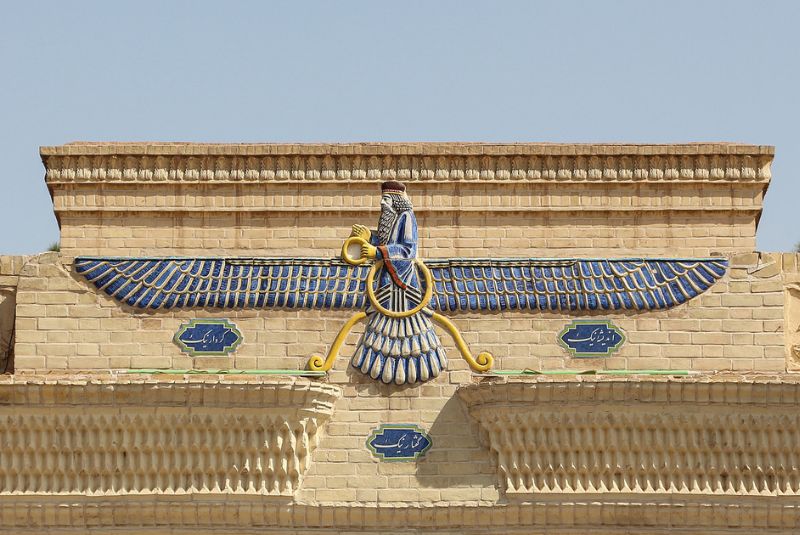
Zoroastrianism
- The Sassanid Empire was deeply rooted in Zoroastrianism, the ancient religion of the Persian people. Zoroastrianism was not only the state religion but also influenced the political and cultural life of the Empire.
- The Sassanian kings, particularly Shapur I and Khosrow I, played significant roles in promoting Zoroastrianism. They were patrons of the Zoroastrian clergy and facilitated the construction of fire temples.
| Uncover: Towers of Silence | Zoroastian Rituals
Religious Tolerance
- While Zoroastrianism held a privileged status, the Sassanids generally exhibited a degree of religious tolerance. Non-Zoroastrian communities, including Christians and Jews, were allowed to practice their religions with certain restrictions and occasional persecutions.
State-Driven Zoroastrianism
- Sassanian rulers actively supported the Zoroastrian clergy, and the high priest, known as the Mobedan Mobed, held a prestigious position. Zoroastrian rituals and practices were incorporated into state ceremonies, and fire temples were constructed across the Empire.
| Read about: Chak Chak Pilgrimage Site | A Zoroastrian Temple
Culture in the Sassanid Empire
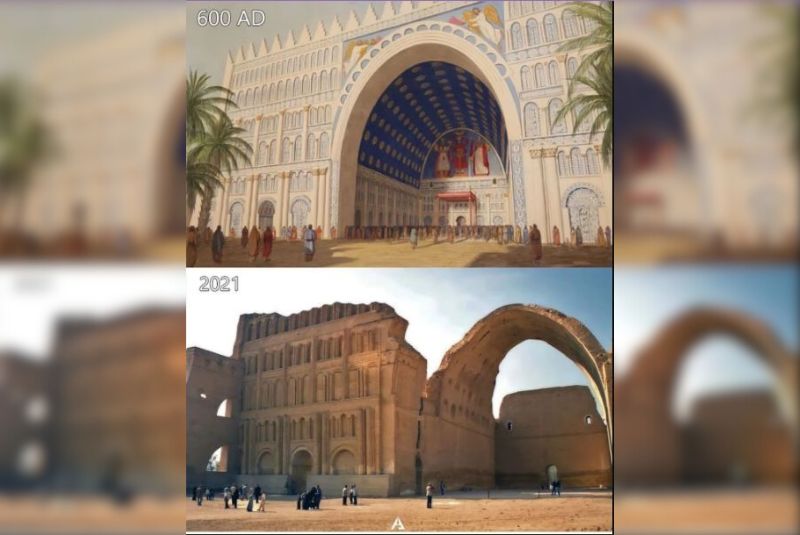
Art and Architecture

- Sassanid Empire art and architecture flourished, especially during the reigns of Shapur I and Khosrow I. Monumental structures, including palaces and bridges, displayed intricate carvings and reliefs.
- The Taq Kasra, a grand arch in Ctesiphon, is an iconic example of Sassanid Empire architecture. Bishapur, founded by Shapur I, featured a combination of Hellenistic and Persian architectural elements.
Language and Literature
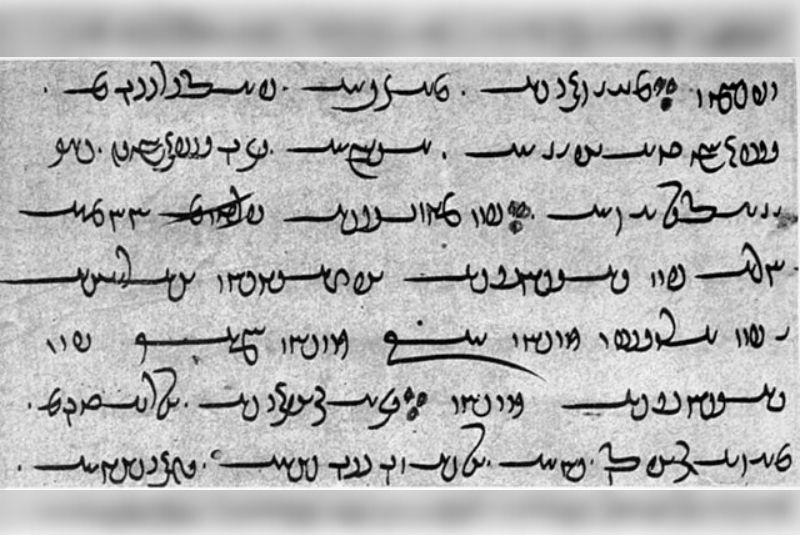
- Middle Persian, also known as Pahlavi, was the official language of the Sassanid Empire. The Sassanian kings supported the development of literature, and Middle Persian texts, including religious writings and epic poetry, flourished during this period.
- Notable literary works include the "Shahnameh" (Book of Kings), an epic poem written by Ferdowsi, which later became a masterpiece in Persian literature.
Administrative and Legal Systems
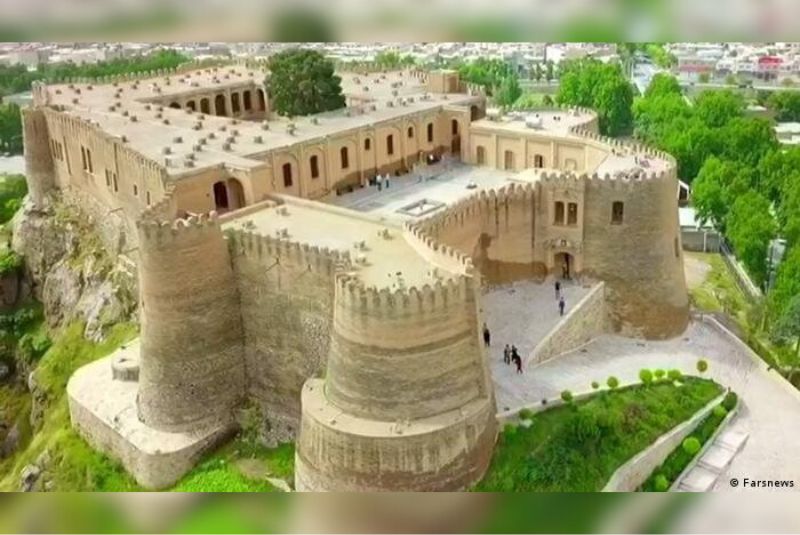
- Khosrow I is credited with implementing administrative reforms, organizing the Empire into efficient provinces, and improving the legal system. The "Khosrow I Inscription" at Naqsh-e Rustam details his achievements in governance.
- The legal system was influenced by Zoroastrian principles, and the judiciary played a crucial role in maintaining order and justice.
| Suggestion: Naqsh-e Rustam | Sassanid and Achaemenid Treasure
Trade and Economy
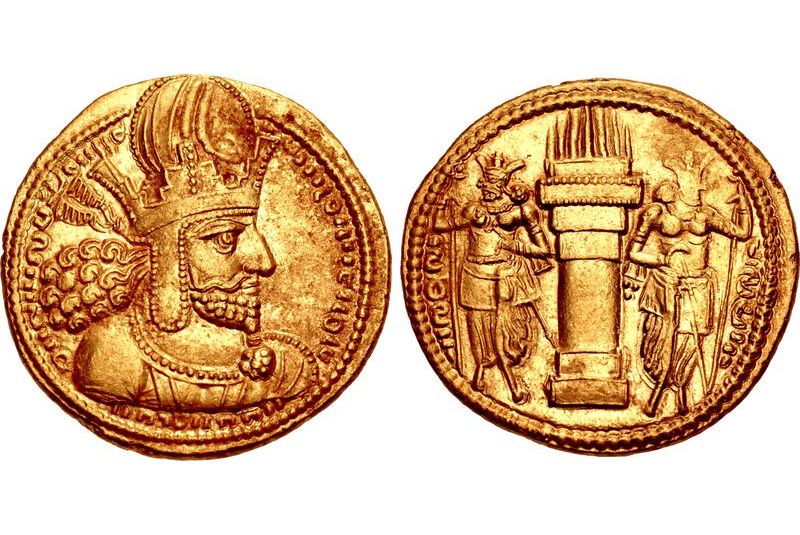
- The Sassanid Empire was a major economic power, benefitting from its strategic location at the crossroads of East and West. Trade routes connecting China to the Roman Empire passed through Sassanian territories.
- Major cities, including Ctesiphon and Seleucia, served as bustling trade centers, contributing to the Empire's prosperity.
| Also read: Iran's Historic Silk Road
Scientific and Medical Advancements
- The Sassanid Empire made contributions to the fields of medicine and science. The renowned physician and philosopher, Burzoe, translated Greek medical texts into Middle Persian, facilitating the exchange of knowledge.
- The "Book of Bundahishn," a Zoroastrian cosmogony, also contains references to scientific and natural phenomena.
Sassanians Customs and Festivals
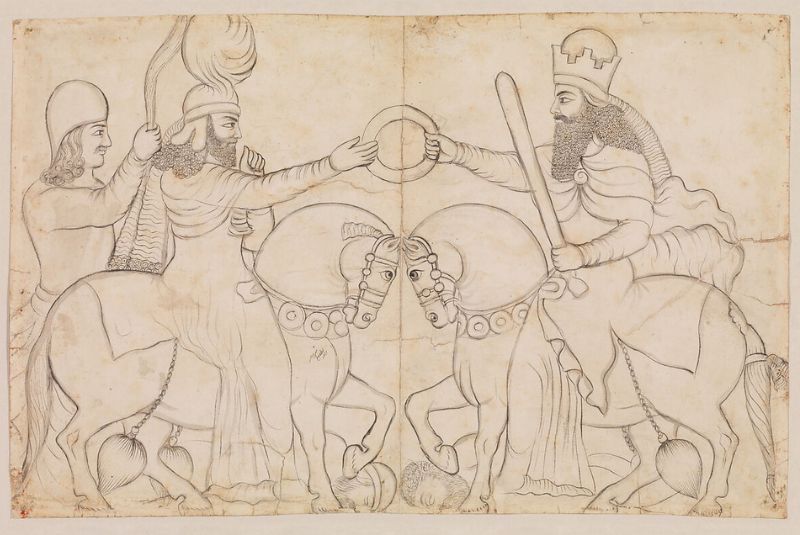
- Zoroastrian Festivals: Zoroastrianism, being the state religion, influenced the customs and festivals of the Sassanid Empire. The most important Zoroastrian festivals included Nowruz, the Persian New Year, which marked the vernal equinox and the arrival of spring. Nowruz is still celebrated today in many parts of the world.
- Royal Celebrations: The Sassanian kings often organized grand celebrations and festivals to showcase the wealth and power of the Empire. These events included elaborate feasts, entertainment, and processions.
- Coronation Ceremonies: The coronation of Sassanian rulers was a significant event, accompanied by rituals and ceremonies that symbolized the king's divine right to rule. The king would receive the sacred Pahlavi (royal) robe during the coronation.
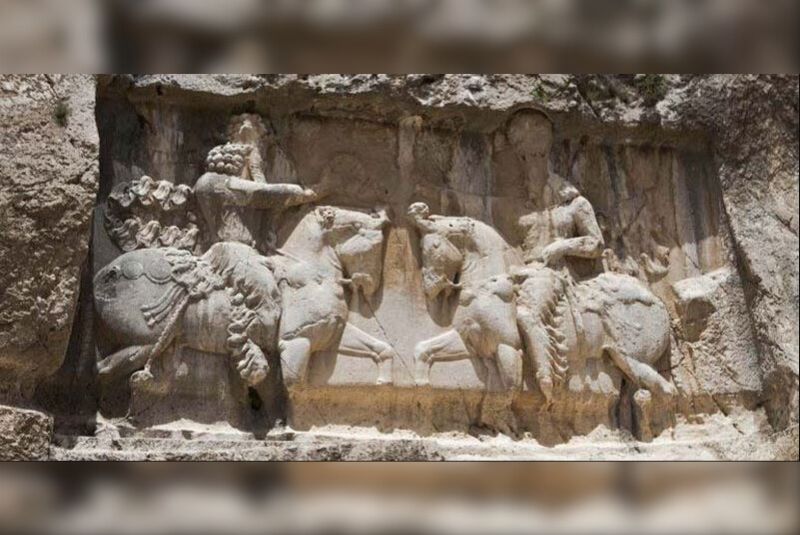
- Military Celebrations: Military victories were commemorated with celebrations and parades. Triumphal arches and monuments were erected to honor successful campaigns and rulers.
- Agricultural Festivals: Agricultural festivals, tied to the seasons and harvests, were likely common among the populace. These events celebrated the fertility of the land and expressed gratitude for a successful harvest.
- Marriage Customs: Marriage customs in the Sassanid Empire involved various rituals, including betrothal ceremonies and wedding festivities. Marriages were often arranged, and dowries played a role in these arrangements.
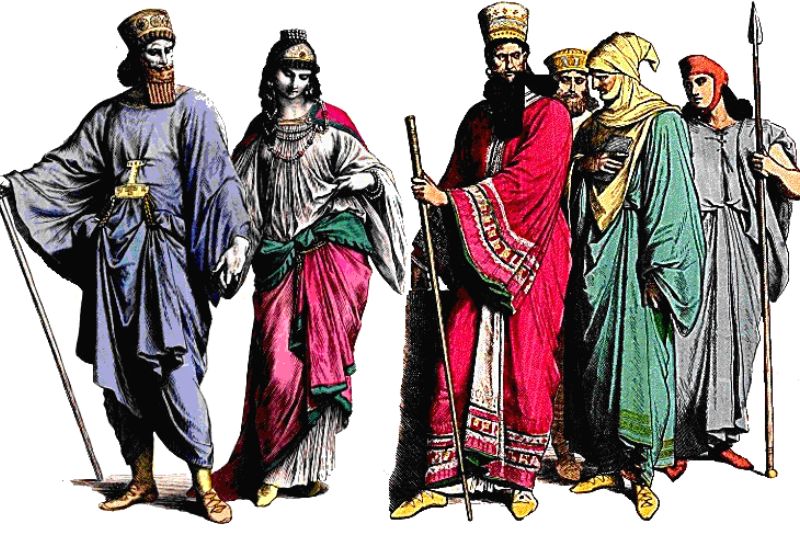
- Fire Temples: Fire temples, sacred places of worship for Zoroastrians, played a central role in religious customs. The maintenance and reverence of the eternal flame in these temples were essential elements of Zoroastrian practices.
- Sadeh Festival: The Sadeh festival, celebrated in mid-winter, was dedicated to fire. It involved the lighting of bonfires and festivities to symbolize the triumph of light over darkness.
- Mehregan Festival: The Mehregan festival, dedicated to the Zoroastrian deity Mithra, celebrated the harvest and was characterized by feasts, dancing, and music.
| Discover: Tirgan Festival; Water Festival in Iran from Ancient Times
Sassanid Empire Flag

The Sassanid Empire, like many ancient Empires, did not have a standardized flag as we understand it today. During this period, symbols and emblems associated with ruling dynasties or individual rulers were often used, but a formalized flag system did not exist in the way it does in modern times.
One symbol associated with the Sassanid Empire is the Derafsh Kaviani, also known as the "Standard of Kavād" or the "Royal Standard." It was a legendary banner associated with the Sassanian kings, representing the might and legitimacy of their rule. The Derafsh Kaviani was not a simple flag but rather a complex royal standard with various symbolic elements.
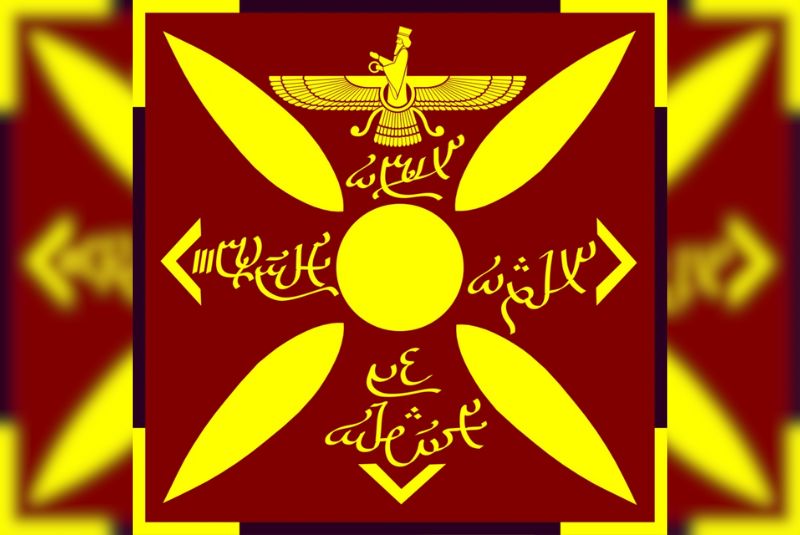
Descriptions of the Derafsh Kaviani suggest that it included images such as a golden disk representing the sun, a moon crescent, and a diadem. It was a powerful symbol of kingship and authority. However, depictions and details about the standard can vary across historical sources, and much of it is shrouded in myth and legend.
| ِDiscover: List of 27 Iran UNESCO World Heritage Sites
Achaemenid Empire vs. Sassanid Empire
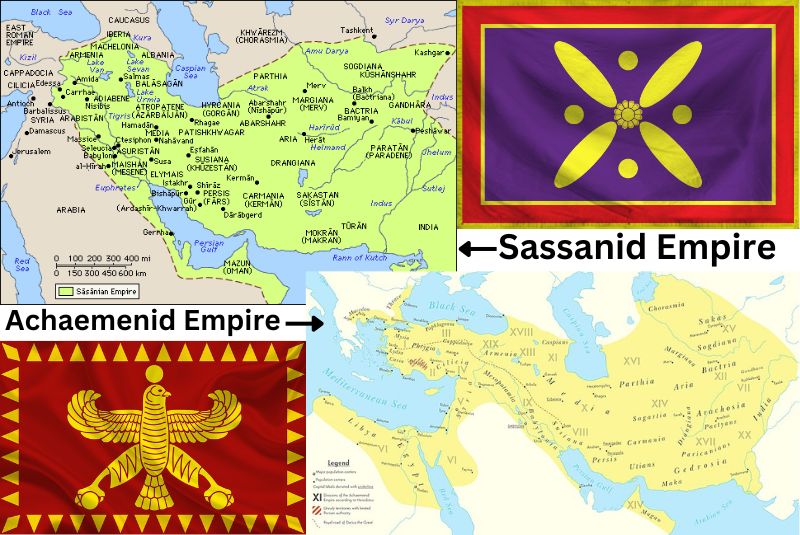
The Achaemenid Empire and the Sassanid Empire were two significant Persian Empires that played crucial roles in shaping the history and culture of the ancient Near East. While both Empires shared a Persian heritage, they differed in terms of their historical contexts, governing structures, and cultural influences.
Aspect | Achaemenid Empire | Sassanid Empire |
Founding and Early Years | Founded by Cyrus the Great in the mid-6th century BCE | Founded by Ardashir I in the 3rd century CE after overthrowing the Parthian Empire |
Governing Structure | Decentralized, with satrapies governed by satraps | Centralized and autocratic rule under the Shahanshah (King of Kings) |
Administrative Divisions | Empire divided into satrapies | More centralized governance structure |
Cultural Influence | Embraced a synthesis of various cultural elements from conquered regions | Characterized by a Persian-centric cultural identity, with a revival of Zoroastrianism |
Religious Policies | Tolerance towards various ethnic and religious groups within the Empire | Promotion of Zoroastrianism as the state religion, with a degree of religious tolerance |
Military Conflicts | Engaged in military conflicts with Greece and other regions | Frequent conflicts with the Byzantine Empire, capturing the Roman Emperor Valerian |
Decline and Fall | Conquered by Alexander the Great in 330 BCE | Succumbed to the Arab Islamic conquests, with the fall of Ctesiphon in 637 CE and the Battle of Nahavand in 651 CE |
Persia or Iran?
What should you call the country?
Read the article below to find out:
Why Did Persia Change Its Name to Iran?
Roman Empire vs. Sassanid Empire
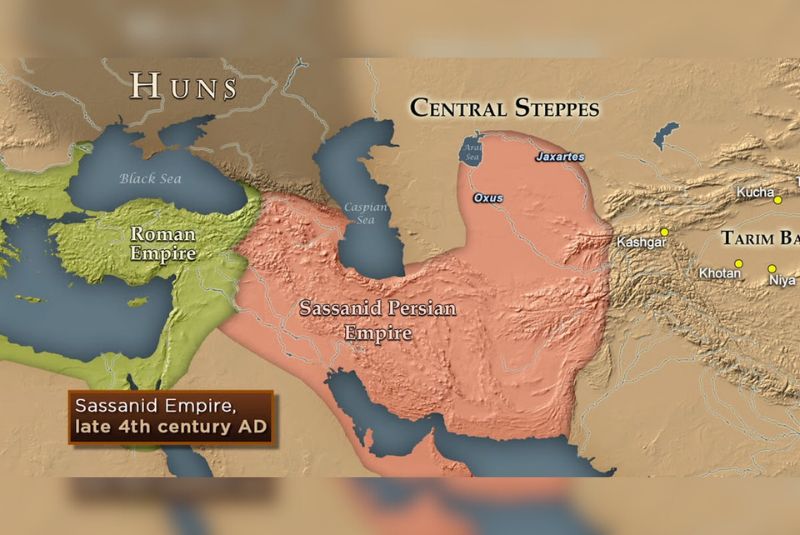
The Roman Empire and the Sassanid Empire were two powerful and contemporaneous states that coexisted in the ancient Near East, often engaging in conflicts and shaping the political landscape of the Eastern Mediterranean and beyond. Here's a comparative overview:
Aspect | Roman Empire | Sassanid Empire |
Geographical Extent | Centered around the Mediterranean, capital in Rome and later Constantinople. Encompassed Western and Eastern regions. | Situated in Persia and Mesopotamia, capital at Ctesiphon. Stretched from Persian Gulf to Euphrates River. |
Timeline | Approximately 27 BCE to 476 CE (Western Roman Empire) and until 1453 CE (Eastern Roman Empire). | 224 CE to 651 CE. |
Political Structures | Evolved from a republic to an imperial system. Characterized by emperors, a Senate, and administrative divisions. | Monarchy with centralized and autocratic rule. Shahanshah held significant power. |
Religion | Initially pagan, later adopted Christianity as the state religion. | Promoted Zoroastrianism as the state religion. Tolerant of other religious communities. |
Military Conflicts | Engaged in Roman-Persian Wars over territorial disputes and influence in the Eastern Mediterranean and Mesopotamia. | Fought in numerous battles including Carrhae, Nisibis, Dara, and the Siege of Amida. |
Cultural Exchange | Despite conflicts, experienced cultural exchange with trade, artistic influences, and knowledge transmission along borders. | Cultural exchange with neighboring regions, influencing art, architecture, and governance. |
Decline and Fall | Western Roman Empire fell in 476 CE due to internal strife and barbarian invasions. Eastern Roman Empire fell in 1453 CE. | Succumbed to Arab-Islamic conquests in 651 CE, marking the end of the Sassanid Empire. |
Legacy | Profound legacy in art, architecture, law, and governance, influencing subsequent civilizations. | Left a lasting impact on Persian and Islamic history, particularly in military traditions and cultural developments. |
| Uncover: Bisotun; The Ancient Complex in Western Iran
Byzantine and Sassanid Empire
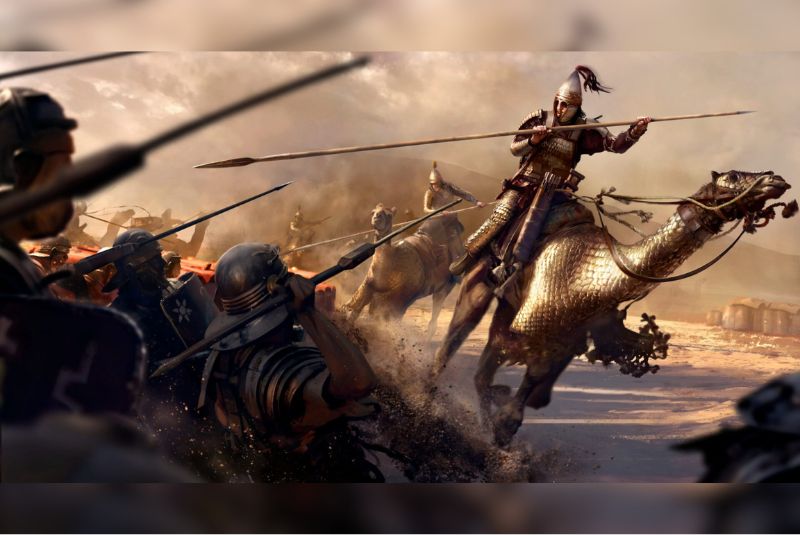
The Byzantine Empire and the Sassanid Empire engaged in a series of conflicts known as the Byzantine-Sassanid Wars, spanning several centuries. These wars were characterized by territorial disputes, power struggles, and ideological differences.
The Byzantine-Sassanid Wars occurred from the 3rd to the 7th centuries CE between the Byzantine (Eastern Roman) Empire and the Sassanid Empire.
3rd Century: Early conflicts involved Sassanid attempts to expand into Roman territories, leading to territorial disputes along the eastern borders.
6th Century: The wars escalated in the 6th century, with major clashes during the reigns of Byzantine Emperor Justinian I and Sassanian King Khosrow I. These conflicts were marked by sieges, battles, and strategic maneuvering.
Despite the intensity of the conflicts, both Empires signed several treaties to establish temporary truces and define their respective spheres of influence. The Treaty of Eternal Peace in 532 CE was one such agreement during the reign of Justinian I.
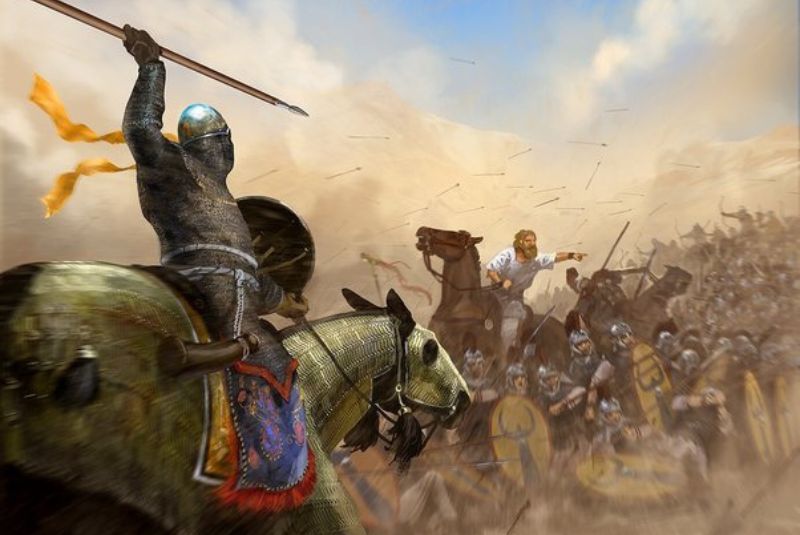
The wars led to shifting borders, with both Empires gaining and losing territories along the eastern frontier. Cities such as Dara and Nisibis changed hands multiple times.
The prolonged conflicts weakened both Empires economically and militarily, leaving them vulnerable to external threats.
The Byzantine-Sassanid Wars created a power vacuum in the region, which facilitated the Arab-Islamic conquests in the 7th century.
The Battle of Yarmouk in 636 CE and the fall of Jerusalem in 637 CE were pivotal moments, marking the decline of Byzantine and Sassanid influence.
The Byzantine-Sassanid Wars effectively came to an end with the decisive Battle of Nineveh in 627 CE. The prolonged conflicts had weakened both Empires, contributing to their susceptibility to the Arab invasions.
| Suggestion: Pasargadae; Legacy of Cyrus the Great & Achaemenids
Sassanid Empire Army
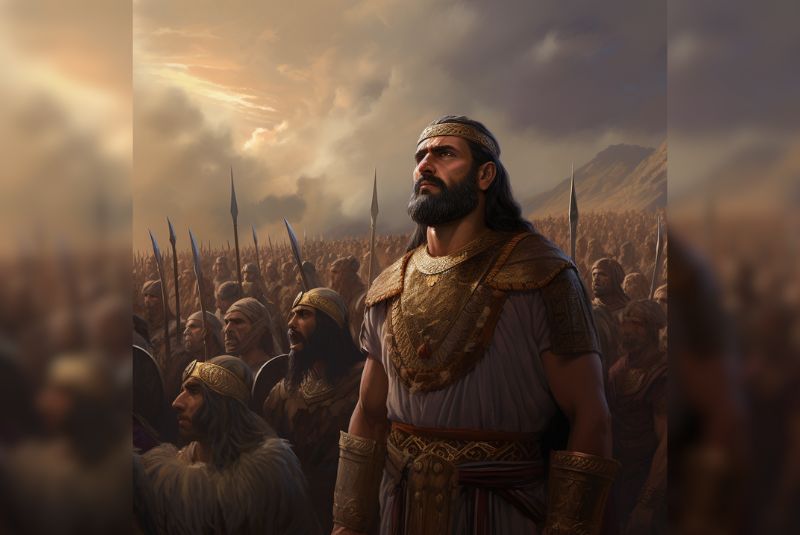
The Sassanid Empire maintained a formidable and well-organized military force that played a crucial role in defending the Empire and expanding its borders. The Sassanid army underwent various reforms and developments over the centuries.
Organizational Structure
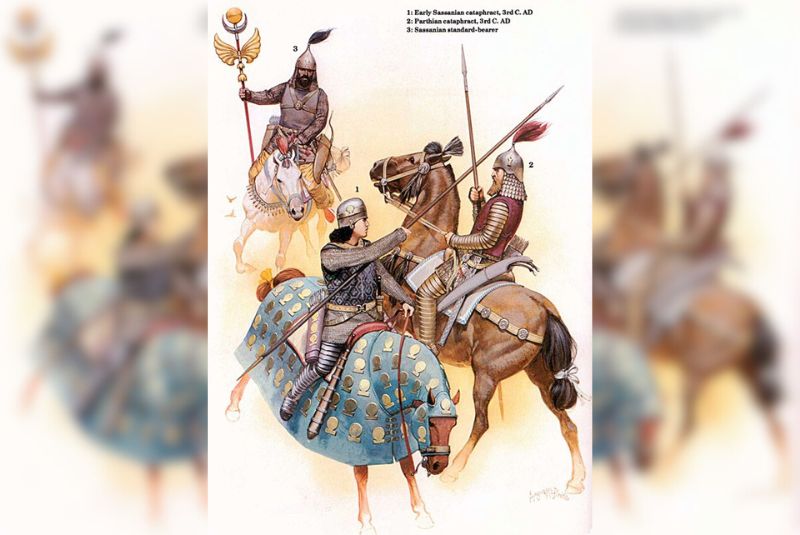
- The Sassanid military had a hierarchical structure. The army was divided into different branches, including infantry, cavalry, and archers.
- The elite royal guard, known as the Immortals, played a significant role in protecting the Shahanshah (King of Kings).
Cavalry
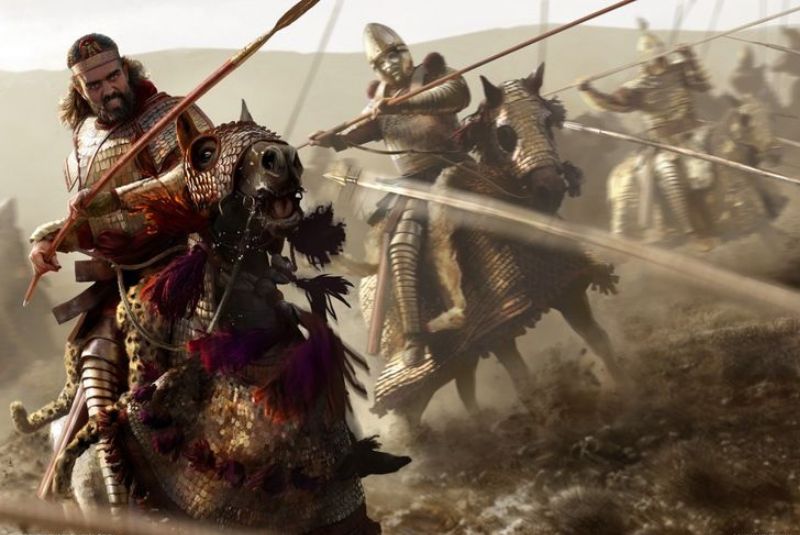
- The Sassanid Empire was renowned for its powerful cavalry, which formed the backbone of its military strength.
- Cataphracts, heavily armored cavalry equipped with lances and bows, were a distinctive feature of the Sassanid cavalry.
Infantry
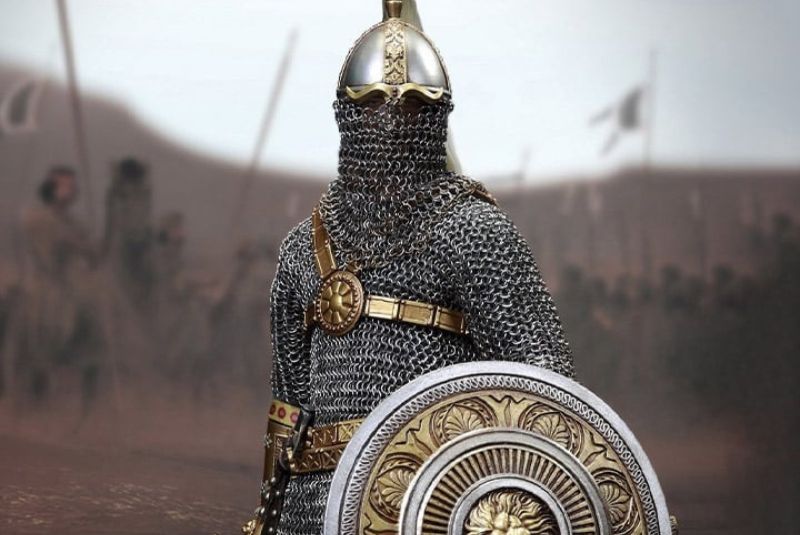
- Infantry units, though not as prominent as the cavalry, played a vital role in battles. They were equipped with various weapons, including swords, spears, and shields.
- The infantry included units of foot archers who provided ranged support.
Elephant Corps
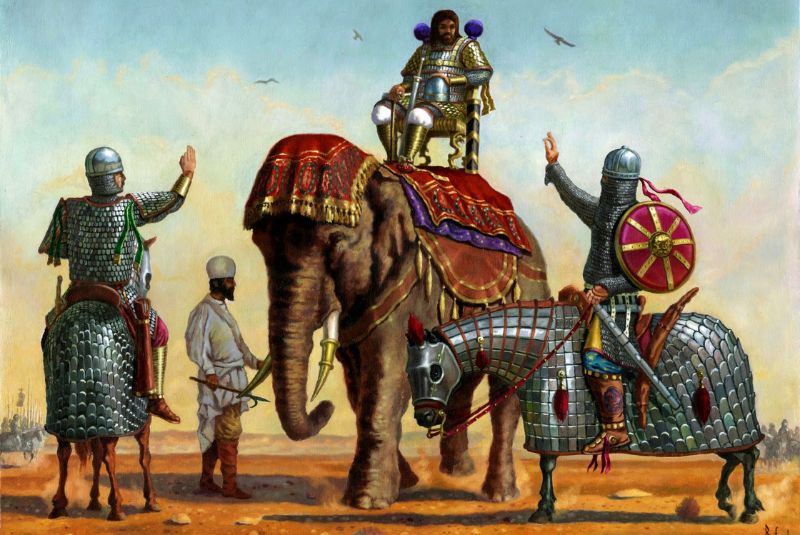
- The Sassanids had an Elephant Corps, which included war elephants imported from India. These elephants were used in battles to create shock and intimidate enemy forces.
Siege Warfare
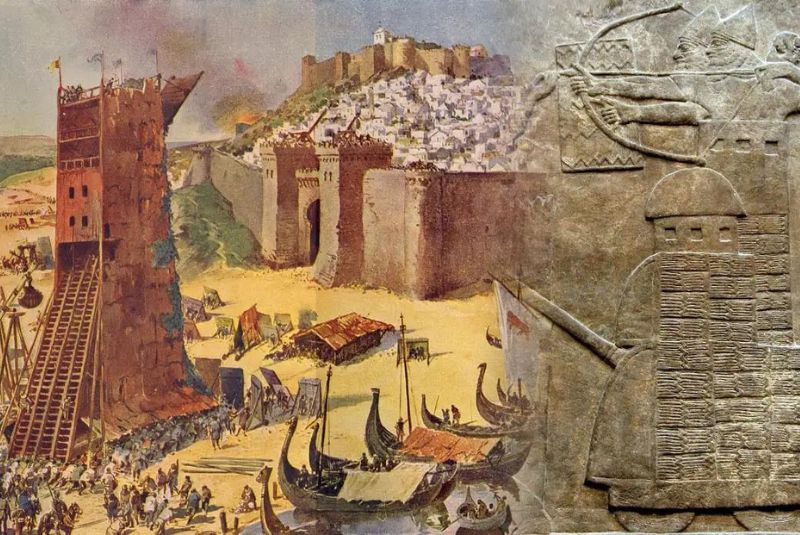
- The Sassanids were skilled in siege warfare, employing various techniques and siege engines to capture fortified cities.
- They often used battering rams, siege towers, and catapults during military campaigns.
Military Reforms
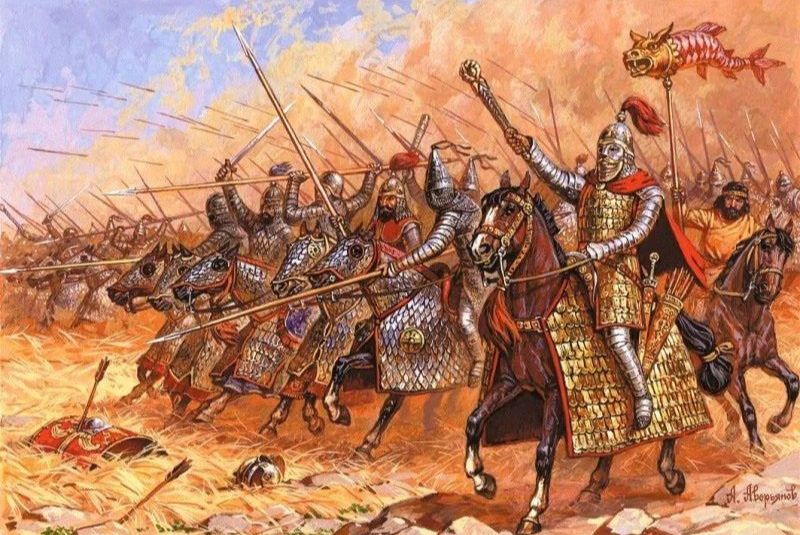
- Some Sassanid kings, such as Shapur II, implemented military reforms to enhance the effectiveness of their forces.
- These reforms included improvements in training, equipment, and logistics.
Naval Forces

- The Sassanid Empire maintained a naval presence, particularly in the Persian Gulf. Naval forces were essential for protecting maritime trade routes and coastal territories.
Military Tactics
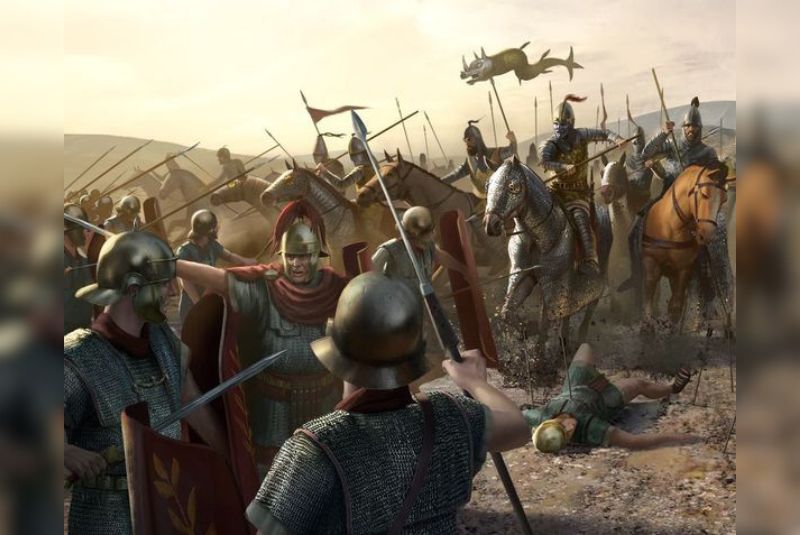
- Sassanid military tactics were diverse, with a reliance on the mobility and flexibility of their cavalry.
- The use of combined arms, including cavalry charges supported by infantry and archers, allowed for versatile battlefield strategies.
Military Campaigns
- The Sassanid army engaged in numerous military campaigns, including conflicts with the Roman Empire in the west and territorial expansions to the east.
- Notable battles include the Battle of Edessa (260 CE) and the Battle of Nahavand (642 CE).
Bottom Line
Beyond its formidable military, the Sassanid Empire left an enduring cultural legacy that shaped the arts, architecture, and governance of the empire. Influences from Zoroastrianism, vibrant artistic expressions seen in the intricate carvings at Taq Kasra and Bishapur, and the administrative reforms of leaders like Khosrow I collectively contributed to the Sassanid identity. While the empire eventually yielded to the Arab-Islamic conquests, its cultural, artistic, and administrative achievements continue to resonate, leaving an indelible mark on the historical landscape of the Middle East.
Share your story!
Comment below and let us know about your Experience.
Your story inspires others!


Comment
Leave a Comment